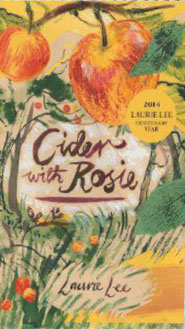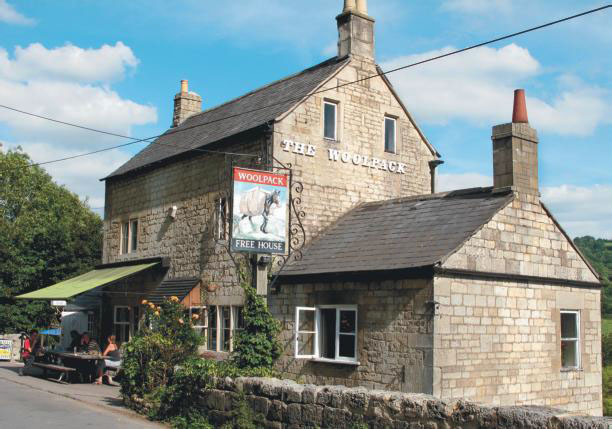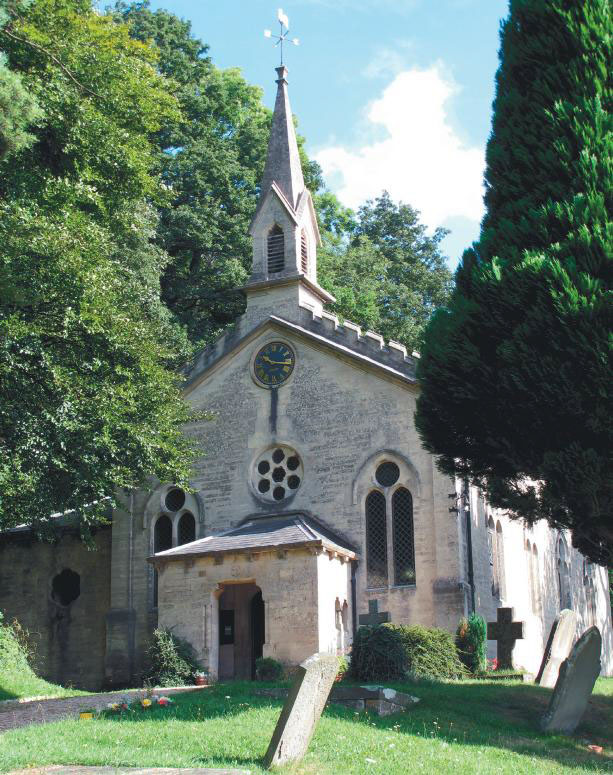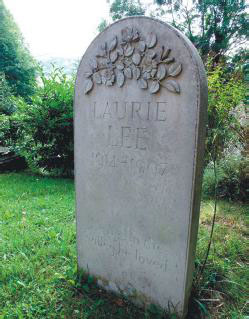
In Search of Times Past in the Cotswolds
[caption id="CiderwithLaurieLee_Feature" align="aligncenter" width="816"]

©COUNTRYSIDE COLLETION-HOMER SYKES/ALAMY
[caption id="CiderwithLaurieLee_img1" align="aligncenter" width="185"]

SIÂN ELLIS
In the summer of the last year of World War I, a 3-year-old boy arrived with his family by cart in the village of Slad, a scattering of houses built down the southeast slope of a narrow Cotswold valley. There, half-hidden below a jungly-grassed bank, he, his dotty-adorable mother and six full- and half-siblings lived in a 17th-century house with “rooks in the chimneys, frogs in the cellar, mushrooms on the ceiling, and all for three and sixpence a week.”
There are the Brontës and Haworth/Yorkshire, Hardy and Wessex, and since the publication of Cider With Rosie in 1959, there has been Laurie Lee, Slad and the Cotswolds. Lee may be the lesser known, but sharp-witted British Heritage readers still identified him in the January issue Puzzler, no doubt having read his classic memoir of village life in a now long-vanished age of horse and cart, candles and lamps, and deference to squire and church.
If you are not familiar with the tome, this 2014, the centenary of Lee’s birth is a fine year to make acquaintance as Slad and its surroundings remember their beloved son through exhibitions, poetry and music—plus a cider festival. The high point is in Slad in June, the anniversary of his birthday, and he is the focus for celebration at the Times Cheltenham Literature Festival, October 3–12. Or simply take an indulgent draught of the book, relaunched this year, and explore anytime: Slad and the deep Stroud valleys, just a hop from Bath or Cheltenham, are full of village secrets.
By the time Lee wrote Cider With Rosie, the first of an autobiographical trilogy, he was already a published poet and playwright. But it was Cider that, overnight, made him seriously famous. It appeared in 1960 as The Edge of Day to rave reviews in the States. Lee chuckled when an excerpt of his schooldays from the book was featured in a U.S. school textbook on advanced composition, placing him alongside Shakespeare, Queen Victoria and Samuel Johnson. In the UK, schoolchildren—me included—discovered his lyrical world after Cider With Rosie became a set text for the English Literature O-level from 1969. The book has sold more than 6 million copies worldwide.
[caption id="CiderwithLaurieLee_img2" align="aligncenter" width="612"]

SIÂN ELLIS
Why the fuss? Infused with poignant Proustian temps perdu and the bitter-sweet passing of boyhood innocence, Cider is seminal: a jewel of poetic magic that captures the spirit of a rural childhood and ways of life just before they are lost to the intrusions of motorcars and the modern world. It’s a portrait of time and place that gentle Brits still cherish in a nostalgic, backward glance.
Begin a tour of Laurie Lee Country with a visit to The Museum in the Park in the center of Stroud, the town where the author was born in 1914. Stroud’s gritty cloth mills of yesteryear have vanished or been put to new uses, and the community around, though still workaday, has become a hub for artists and craftspeople, delis and bookshops, and an award-winning farmers’ market.
The Museum in the Park sets the Cider scene with a small display including a recreation of Lee’s childhood kitchen, focal point of family chaos and warmth, and there’s the chance to hear recordings of the author reading from his book.
LAURIE LEE CENTENARY
For events and further information, see the official centenary website www.laurielee.org or www.museuminthepark.org.uk.
For visiting the Stroud valleys, see www.visitthecotswolds.org.uk.
[caption id="CiderwithLaurieLee_img3" align="aligncenter" width="997"]

SIÂN ELLIS
Then it’s off to Slad on the B4070, two miles along one of the five fingers of valleys that flex from Stroud. As you curve into the tiny village, the valley unfolds with fields and woods climbing its steep sides, dotted with Cotswold-stone cottages: the English pastoral tapestry much as Lee described.
In the semi-feudal world of Cider everyone knew their place, working for the squire, on farms or in the mills of Stroud. Schooling prepared them for no more and no less. Characters like Lee’s five uncles, heroic khaki ghosts from the Great War and fading Empire, leap from the page, and of course there’s Rosie of the title who, during haymaking, entices young Laurie beneath a wagon to share a jar of cider and kisses. Hushed-up murder, infant deaths and the threat of the workhouse cast sinister shadows, but the pervading mood is of an inexorable seasonal round: winter ice skating, festivals, Christmas “carol barking”; summers of creamy, hazy sunshine clogging beech trees as though with wild wet honey—poetic vignettes rather than action saturate the pages.
So what of the idyll today? Lee’s widow Kathy and daughter Jessy may still be seen around the village and his T-shaped childhood home beneath the grassy bank is still here, though spruced up by the current owners who seem unfazed by coaches of (frequently Japanese) literary pilgrims peering down to take photos. There’s the squire’s house too, though no squire, and the school is now a private home.
[caption id="CiderwithLaurieLee_img4" align="aligncenter" width="613"]

SIÂN ELLIS
Lee is commemorated in stained glass in Holy Trinity Church and is buried in the churchyard (he died in 1997) overlooking the 16th-century Woolpack Inn, where he held court as a famous author—by which time he had moved house in the village and split his time between Slad and London. You can sup cider in The Woolpack, or beer (landlady Hannah confides Lee “was a real ale man”), and there’s good food and a stash of Lee memorabilia, books and photographs to peruse.
The Slad Society, often meeting in The Woolpack, keeps alive village traditions of fetes and pantomimes and has been busy planning its weeklong Laurie Lee festival, June 21 to 29, featuring cream teas, an exhibition in the church, a cricket match against nearby Sheepscombe, a cider festival and flamenco evening—paying homage to Lee’s travels and links with Spain.
“Slad is as inspirational and wonderful now as it was in Laurie Lee’s day,” said Amanda Lawrence, an artist working in glass. Inspired by her Slad Valley surroundings, she has created a body of work to coincide with anniversary celebrations (www.amandalawrenceglass.com). “The spirit of the valley attracts creative types, interesting and slightly eccentric people, alongside those who have lived here for years,” Lawrence said. “It’s a welcoming community.”
That’s a sentiment echoed by Simon and Julie Cooper, who specialize in period framing, woodcarving and gilding in their farmhouse studio—on the very farm that produced the very cider of Cider With Rosie. This year they’ve contributed apples to a special centenary cider produced by a local maker; they also offer B&B if you fancy a stay on the iconic farm (www.furnersfarm.co.uk).
If village life is still in good health, so too is Lee’s vision of the countryside: He was a keen campaigner to keep the valley beautiful, a battle upheld by the lively Slad Valley Action Group, currently opposing building developments on local fields. Trantershill Wood, which Lee bought to safeguard, has been acquired by Gloucestershire Wildlife Trust and renamed Laurie Lee Wood. The Trust has created a walking trail around the valley, punctuated by “poetry posts” featuring Lee’s words.
[caption id="CiderwithLaurieLee_img5" align="alignright" width="249"]

SIÂN ELLIS
Slad may be a small place, but it remains a beating heart of a perennial ideal of the English countryside that transcends even Lee. Call in some time and you can share and explore Laurie Lee Country further: valleys such as Painswick, airy commons and woods, time-honored villages with welcoming pub and church.





Comments